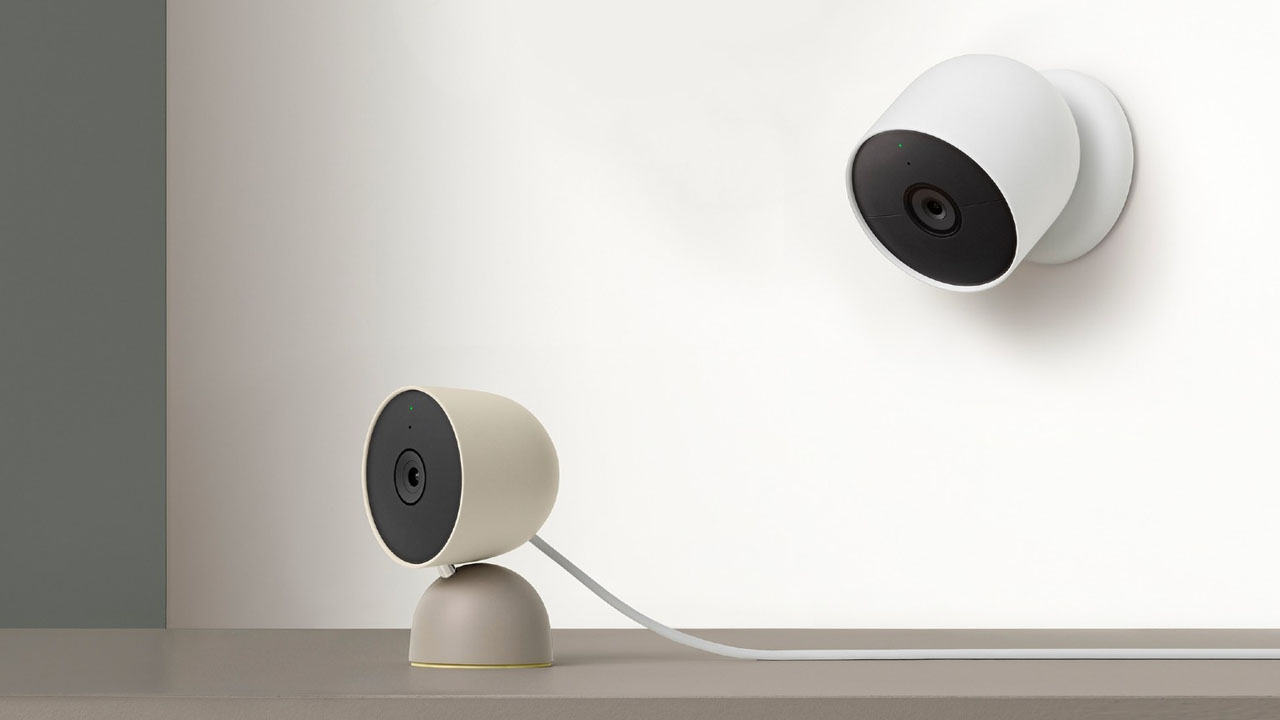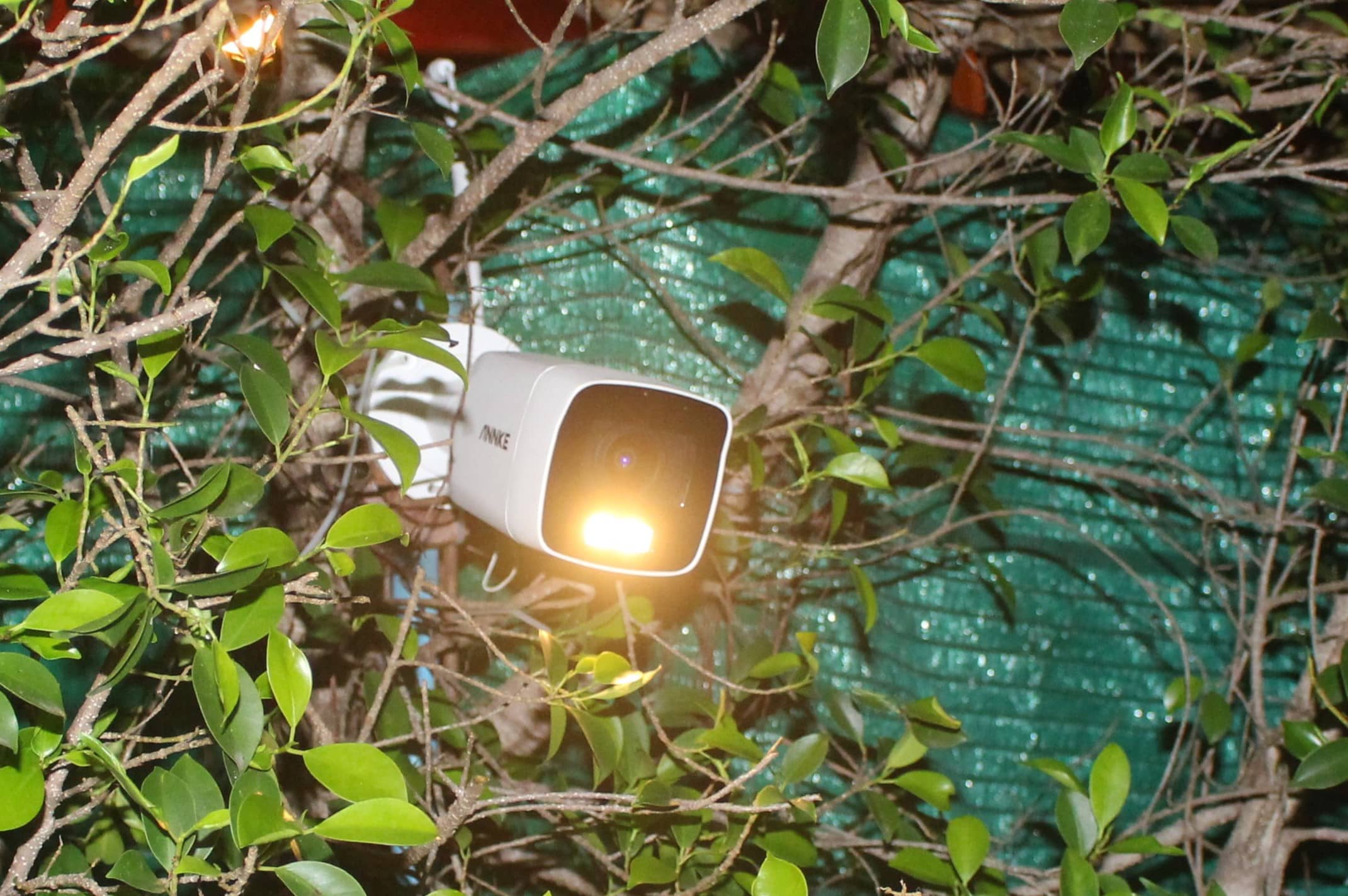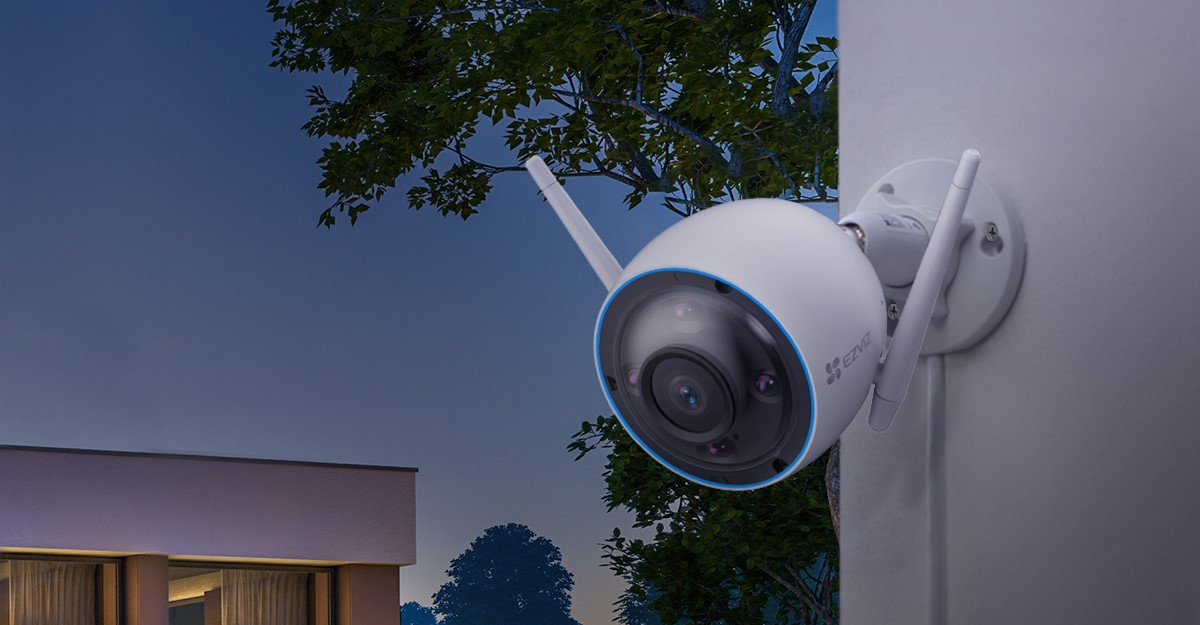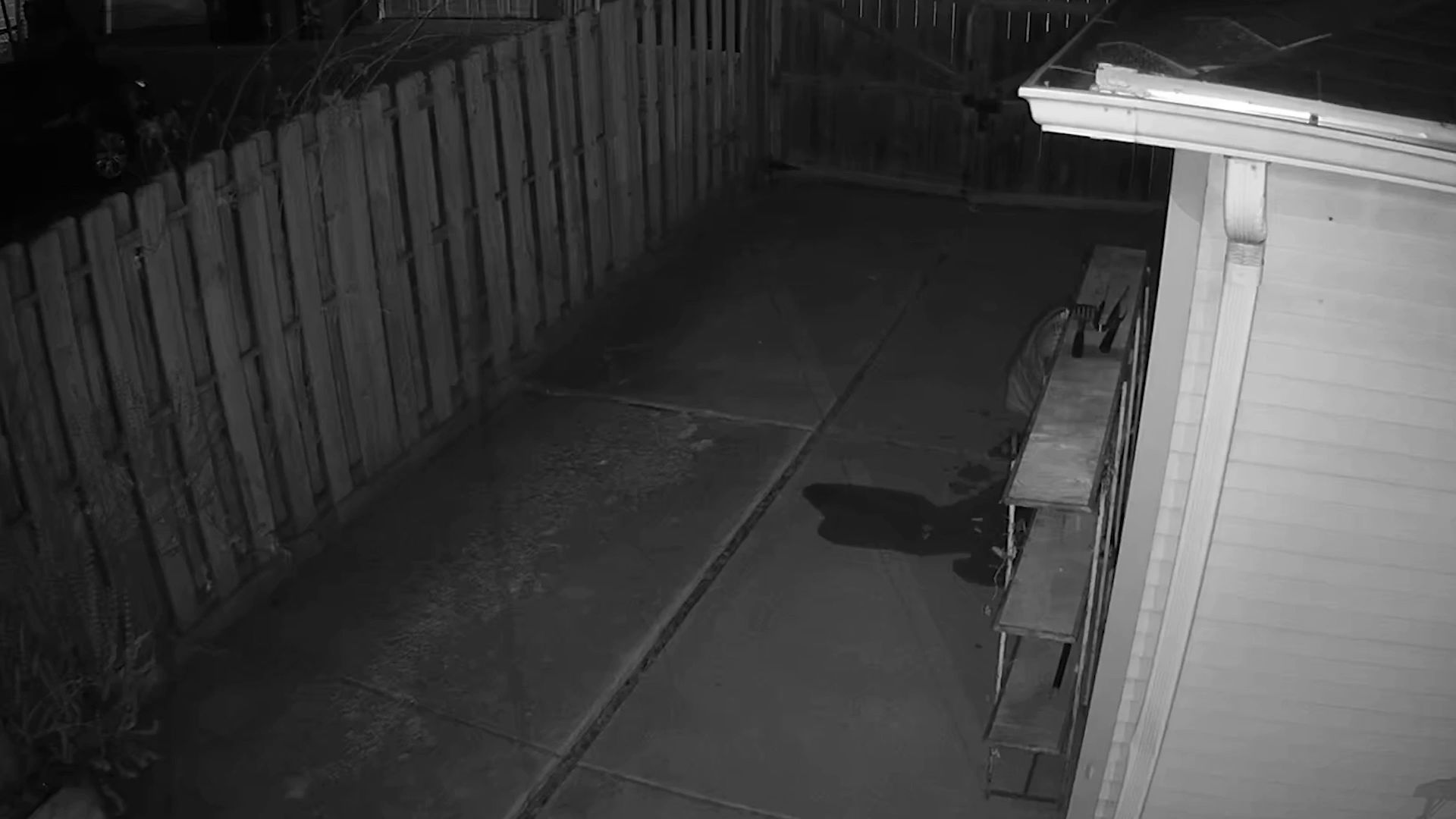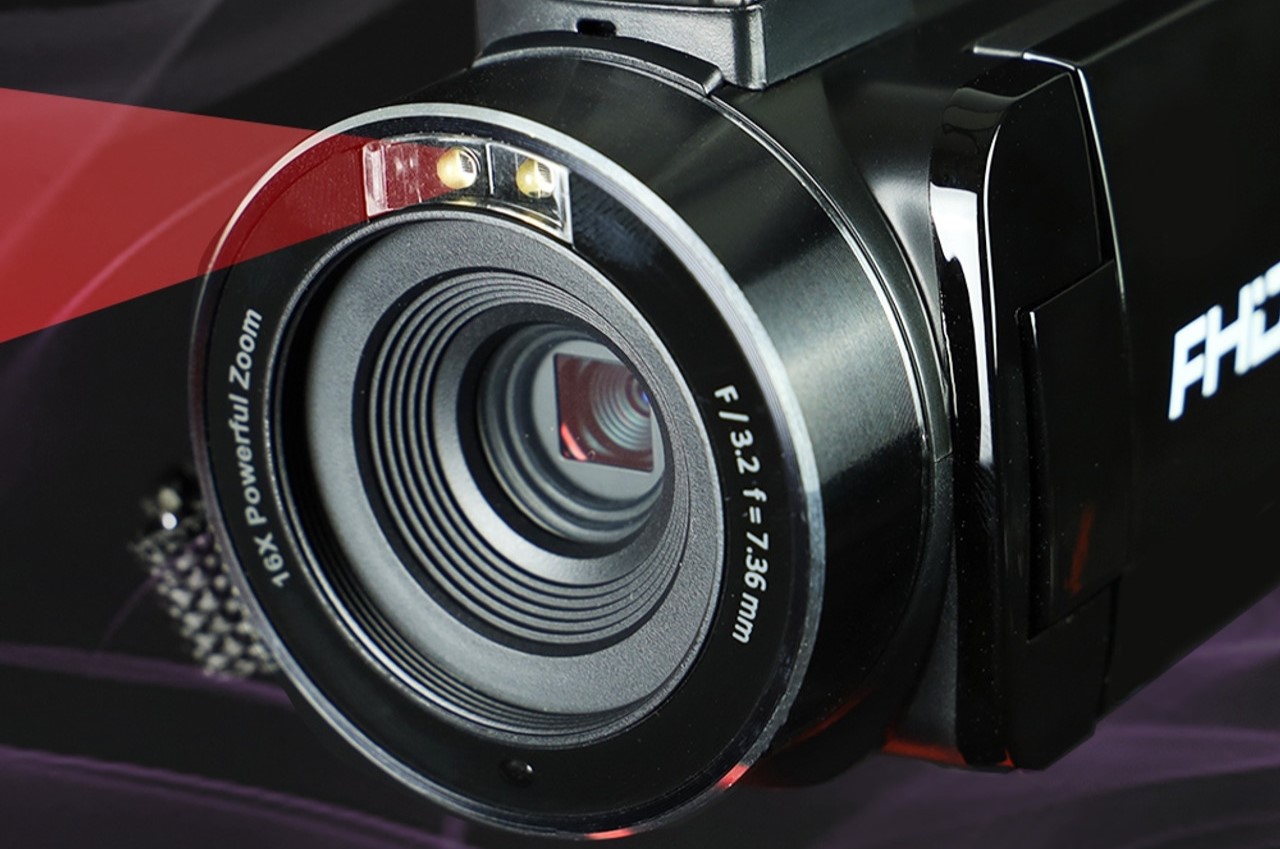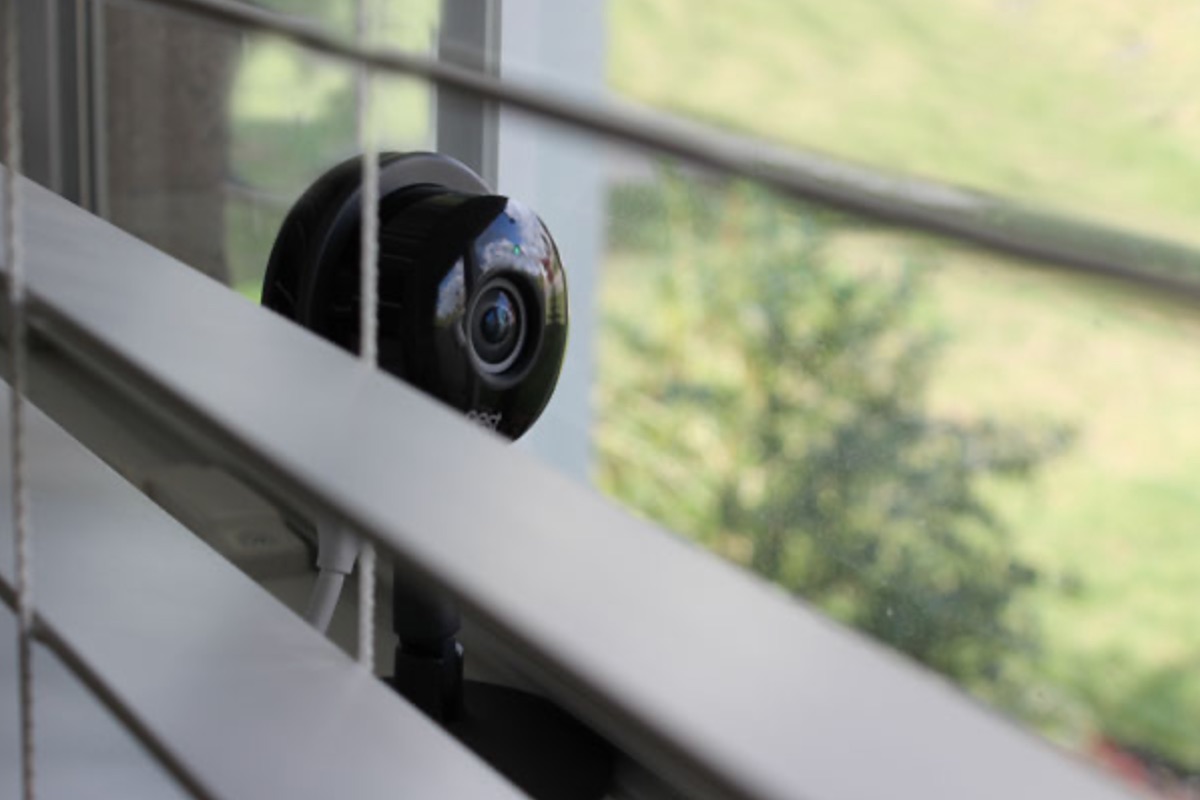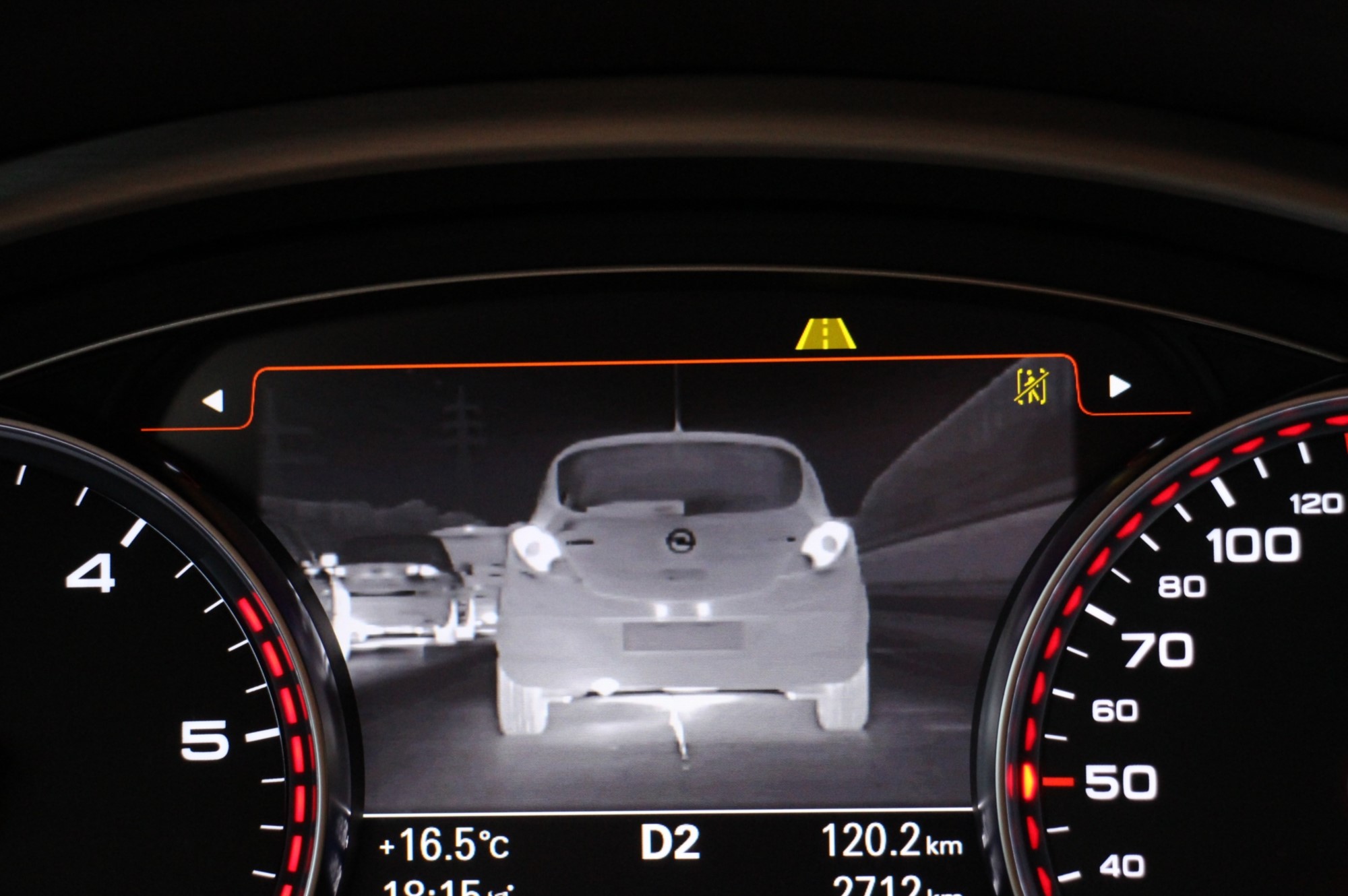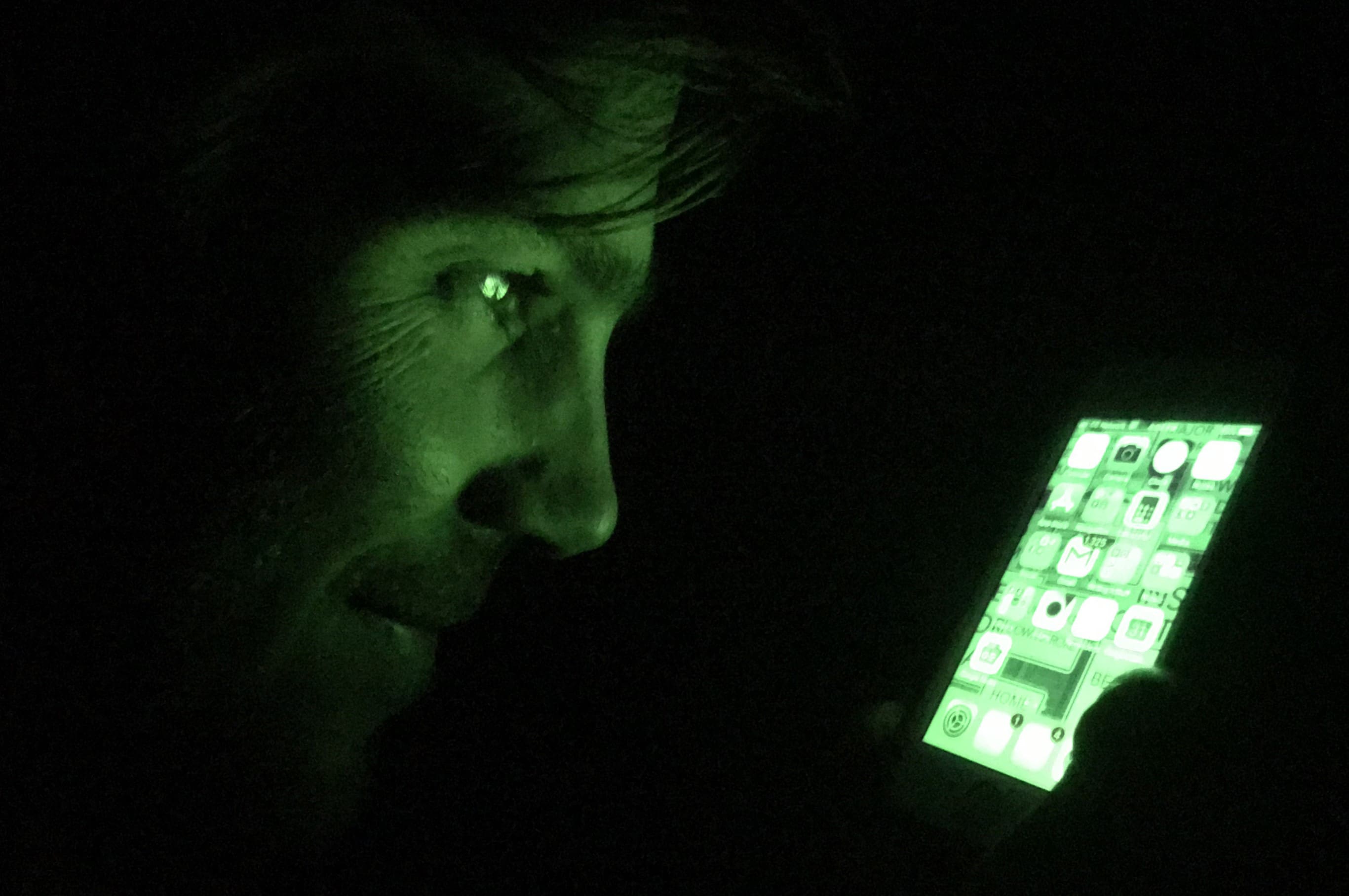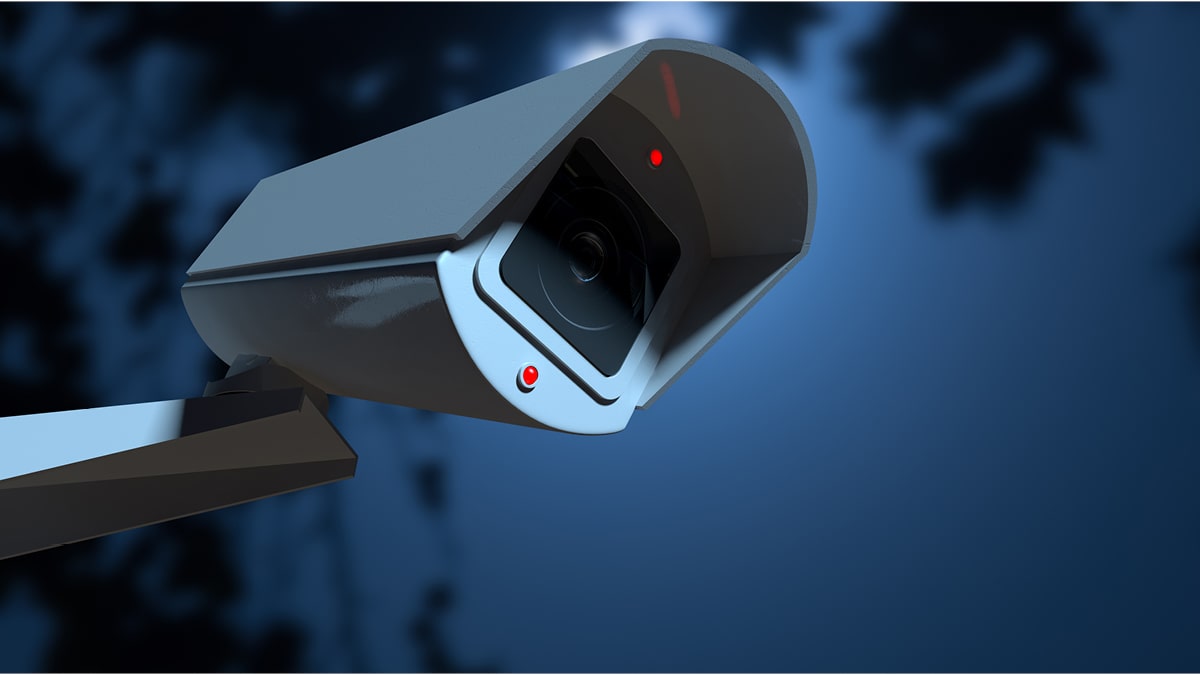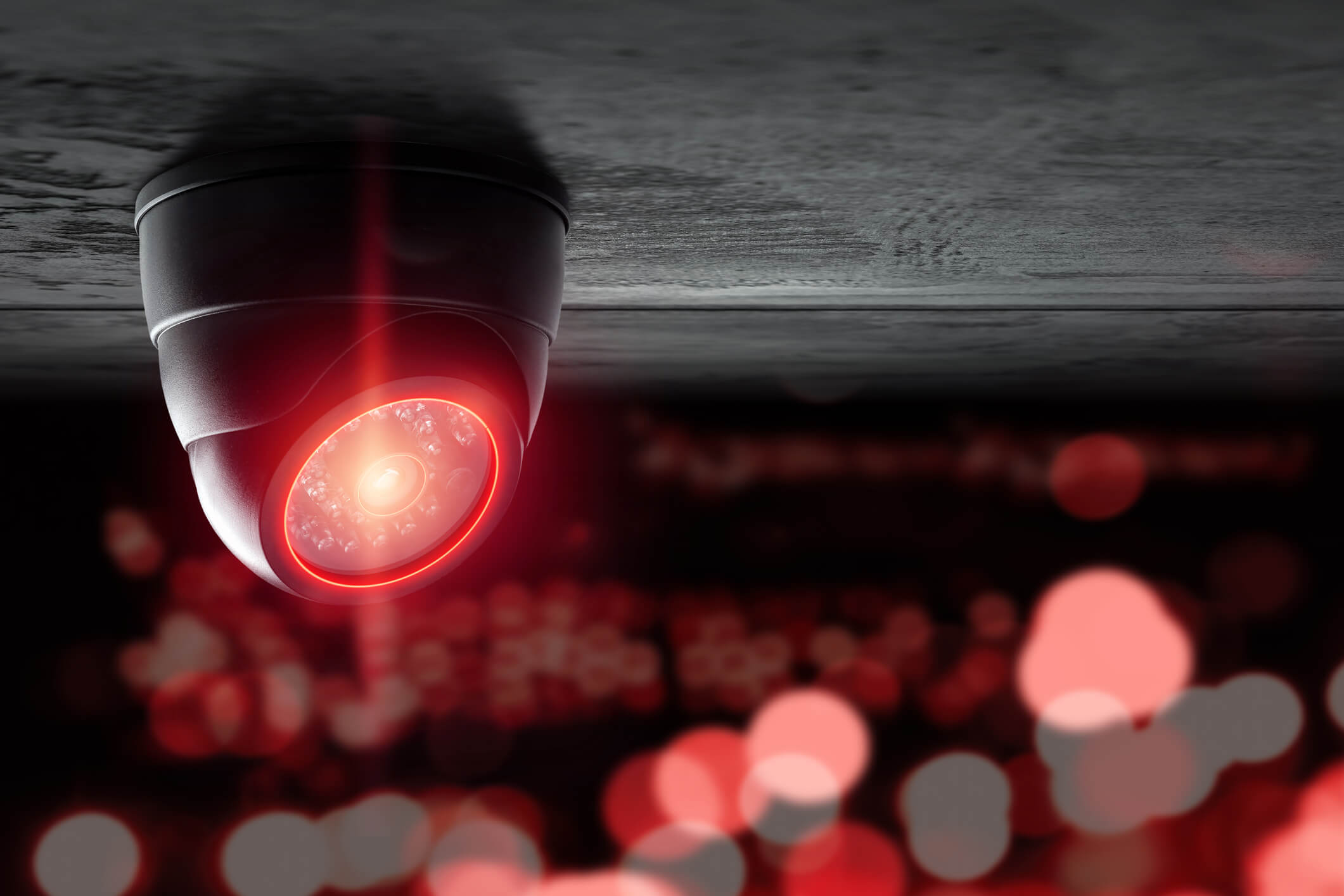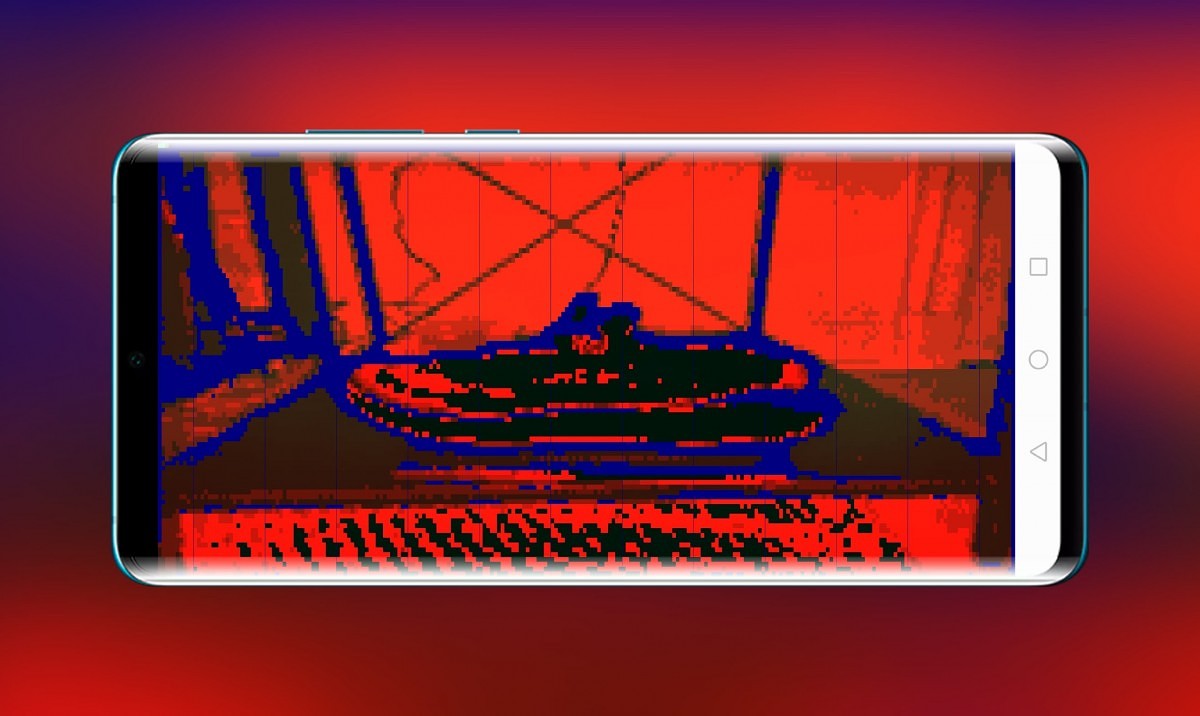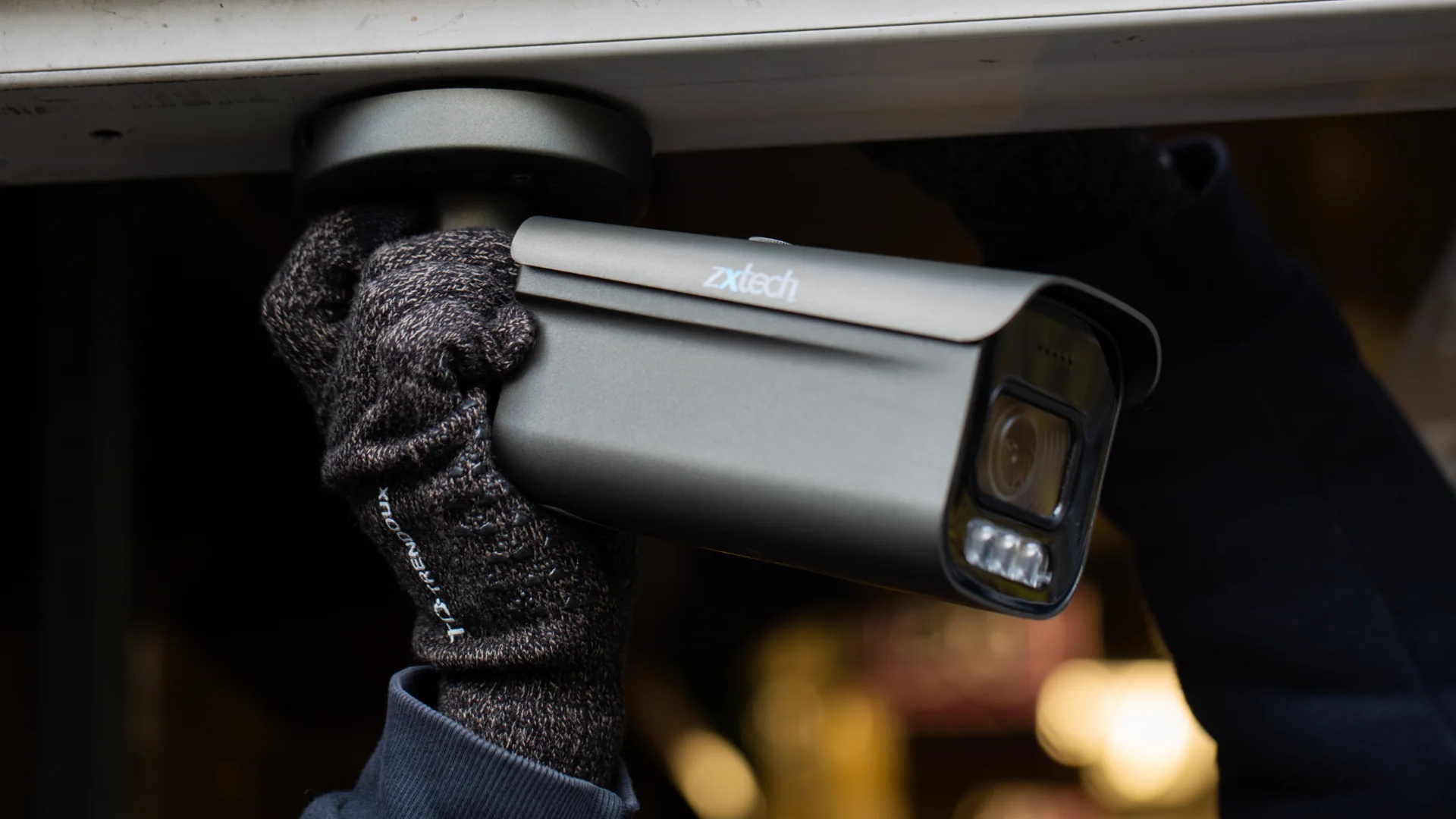Home>Home Security and Surveillance>How Bright Are Night Vision Cameras
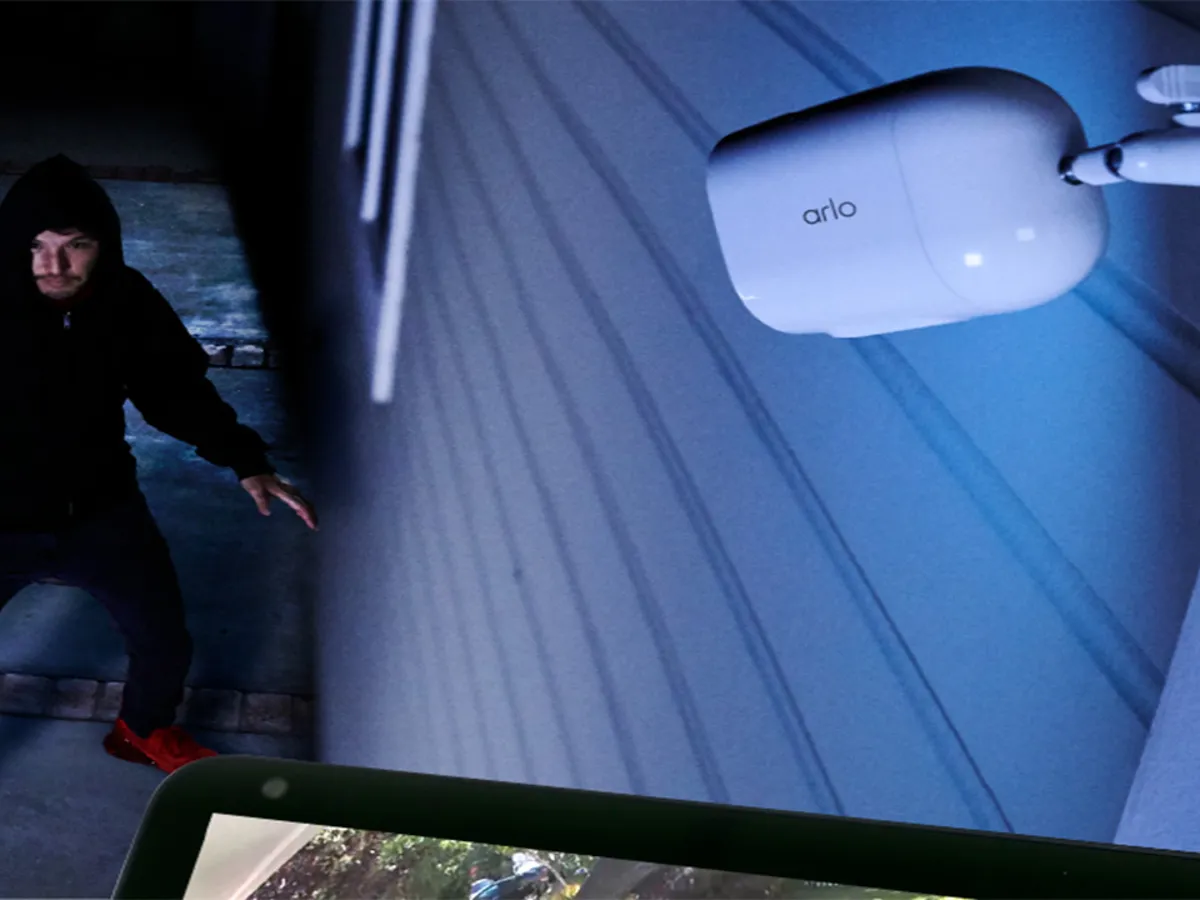

Home Security and Surveillance
How Bright Are Night Vision Cameras
Modified: March 6, 2024
Enhance your home security and surveillance with night vision cameras. Discover the remarkable brightness and clarity they bring to your monitoring needs.
(Many of the links in this article redirect to a specific reviewed product. Your purchase of these products through affiliate links helps to generate commission for Storables.com, at no extra cost. Learn more)
Introduction
Welcome to the world of home security and surveillance! In an era where safety and peace of mind are paramount, it is crucial to invest in reliable and effective security measures for your home. One such measure is the use of night vision cameras, which not only provide surveillance during the day but also offer enhanced visibility in low-light conditions.
Night vision cameras have become an indispensable tool for homeowners, businesses, and law enforcement agencies alike. With their ability to capture clear images and videos during the darkest hours of the night, they play a crucial role in deterring crimes and ensuring the safety of your loved ones.
However, not all night vision cameras are created equal. Some offer superior brightness and clarity, while others may fall short in delivering satisfactory results. To make an informed decision when choosing a night vision camera, it is important to understand how they work, the different types of night vision technology available, and the factors that affect their brightness.
So, let’s dive deeper into the world of night vision cameras and explore the intricacies of their brightness capabilities. By the end of this article, you’ll have a comprehensive understanding of what makes a night vision camera bright and how to evaluate their performance.
Key Takeaways:
- Night vision cameras use advanced technology to capture clear images in the dark, offering enhanced security for homes and businesses. Understanding their brightness factors helps in choosing the right camera for specific needs.
- Advancements in night vision camera technology, such as high-definition resolution and smart IR technology, have improved brightness and image quality, making them essential for comprehensive home security.
Read more: How To Make A Night Vision Camera
Understanding Night Vision Cameras
Night vision cameras are specially designed devices that allow you to see and record images in low-light or complete darkness. They utilize advanced technology to amplify the available light and produce clear, detailed images, even in situations where the human eye may struggle to perceive anything.
These cameras employ a combination of optics, sensors, and image processing algorithms to capture and enhance the available light. The result is a visible image that would otherwise be near-impossible to detect without night vision capabilities.
One key feature of night vision cameras is their ability to distinguish between different light spectrums. They can detect a wide range of wavelengths, including infrared (IR) light that is invisible to the naked eye. This allows them to see objects and people that might be hidden in the darkness.
Furthermore, night vision cameras come in various forms, including standalone surveillance cameras, security camera systems, and even integrated into doorbell systems. They can be connected to a monitor or accessed remotely from a computer or mobile device, giving you real-time access to the captured footage.
It’s important to note that night vision cameras are not limited to outdoor use. They can be equally useful indoors, providing enhanced visibility in rooms with minimal lighting or during power outages. Whether you want to monitor your front porch, backyard, or living room, night vision cameras offer a reliable solution for all your surveillance needs.
By understanding how night vision cameras function and their versatility, you can make an informed decision about incorporating them into your home security system. The next step is to explore the different types of night vision technology available.
Types of Night Vision Technology
Night vision cameras utilize various technologies to capture and enhance images in low-light conditions. Understanding the different types of night vision technology will help you choose the right camera for your specific needs. Let’s explore some of the most common types:
- Image Intensification: This is the most traditional and widely used type of night vision technology. Image intensification devices amplify the available light to create a visible image. They work by capturing photons (particles of light) through an objective lens and then passing them through a photocathode. The photons strike the photocathode, releasing electrons that are accelerated and focused onto a phosphor screen. The screen converts the electrons into visible light, resulting in a brightened image. Image intensification technology is commonly found in night vision goggles and monoculars.
- Thermal Imaging: Unlike image intensification, thermal imaging does not rely on ambient light to create an image. Instead, it detects the heat signatures emitted by objects and converts them into a visible image. Thermal imaging cameras use a thermal detector, called a microbolometer, to sense infrared radiation. The radiation is then converted into electrical signals, which are processed to create a thermal image. This technology is particularly useful for detecting objects and individuals in complete darkness or challenging weather conditions.
- Near-Infrared Illumination: In this type of night vision technology, near-infrared (NIR) illuminators emit infrared light that is invisible to the human eye but can be detected by the camera. These illuminators are typically built into the camera or installed as separate units. They provide additional light in low-light environments, enhancing the visibility of objects and improving the image quality. Near-infrared illumination is often used in conjunction with other night vision technologies to achieve optimal results.
- Active Illumination: Active illumination is similar to near-infrared illumination but with one key difference. Instead of relying on ambient light or separate infrared illuminators, active illumination systems emit their own light source, typically in the form of infrared LEDs. This allows the camera to capture clear images in complete darkness. One advantage of active illumination is that it doesn’t rely on external light sources, giving it greater flexibility in various lighting conditions.
Each type of night vision technology has its own strengths and weaknesses, so it’s important to consider your specific requirements and the intended use of the camera when choosing the right technology for your needs. Now that we understand the different types of night vision technology, let’s delve into how night vision cameras work.
How Night Vision Cameras Work
Night vision cameras utilize advanced technology to capture and enhance images in low-light conditions. Understanding how these cameras work will give you insight into their capabilities and help you make an informed choice when selecting the right camera for your security needs.
At the heart of a night vision camera is an image sensor, which is responsible for capturing the incoming light and converting it into an electrical signal. Depending on the type of camera, this can be either a charge-coupled device (CCD) or a complementary metal-oxide-semiconductor (CMOS) sensor.
In low-light environments, where the available light is minimal, night vision cameras employ various techniques to enhance the captured image. One common method is through image intensification technology. These cameras use an intensifier tube, which amplifies the available light to make the image appear brighter. The intensifier tube consists of a photocathode, a microchannel plate, and a phosphor screen. As the photons enter the tube, they strike the photocathode, releasing electrons. These electrons pass through the microchannel plate, which multiplies their number, resulting in a brighter image. Finally, the electrons hit the phosphor screen, which emits visible light for the user to see.
Thermal imaging cameras, on the other hand, work differently. Instead of relying on ambient light, they detect the heat emitted by objects. They use a special thermal detector called a microbolometer, which senses the infrared radiation emitted by objects due to their temperature. The microbolometer converts the radiation into electrical signals, which are then processed to create a thermal image. The resulting image displays variations in temperatures, allowing for clear visibility even in complete darkness or adverse weather conditions.
In addition to image intensification and thermal imaging, night vision cameras may also utilize other technologies, such as near-infrared illumination or active illumination. Near-infrared illumination involves the use of infrared light sources that emit light in the near-infrared spectrum. These light sources, often integrated into or paired with the camera, illuminate the surroundings with infrared light, which is invisible to the human eye but detectable by the camera. This additional light enhances visibility and improves the quality of the captured images.
Active illumination, on the other hand, involves the use of infrared LEDs built directly into the camera or as separate illuminators. These LEDs emit infrared light, which serves as a light source for the camera to capture clear images in complete darkness. Active illumination is particularly useful in situations where there is no ambient light available.
By combining these technologies, night vision cameras are able to overcome the challenges of low-light conditions and provide enhanced visibility and surveillance capabilities. Each type of technology has its own advantages and limitations, so it’s important to consider your specific requirements when choosing a night vision camera for your home security.
Now that we have a good understanding of how night vision cameras work, let’s explore the factors that can affect the brightness of these cameras.
When choosing a night vision camera, look for the “LUX” rating. The lower the LUX rating, the better the camera will perform in low light conditions. A camera with a LUX rating of 0.01 or lower is ideal for capturing clear images in the dark.
Factors Affecting Brightness in Night Vision Cameras
When it comes to assessing the brightness of night vision cameras, several factors come into play. Understanding these factors can help you make informed decisions when selecting a camera for your specific needs. Here are some key factors that can affect the brightness of night vision cameras:
- Light Sensitivity: The light sensitivity of a night vision camera determines how well it can capture and amplify available light. Cameras with higher light sensitivity are generally better at capturing clear and bright images in low-light conditions. Look for cameras with low lux ratings, as they indicate higher sensitivity to light.
- Infrared Range: Night vision cameras typically use infrared light to enhance visibility in low-light environments. The infrared range of a camera refers to the distance over which the infrared illumination can effectively illuminate the scene. Cameras with longer infrared ranges can capture brighter and clearer images over greater distances.
- Resolution: The resolution of a night vision camera refers to the number of pixels in the captured image, which directly impacts the level of detail and clarity. Higher resolution cameras can produce brighter, more detailed images, especially when coupled with advanced image processing algorithms.
- Optics Quality: The quality of the camera’s optics, including the lens and sensor, can greatly impact the brightness of the captured images. High-quality lenses that allow more light to enter the camera can result in brighter images. Similarly, advanced sensor technology can improve the camera’s ability to capture and process light, enhancing the overall brightness and image quality.
- Environmental Conditions: The surrounding environment plays a significant role in the brightness of night vision camera footage. Factors such as the amount of ambient light, the presence of obstacles or obstructions, and weather conditions can all affect the overall brightness. Cameras with adaptive technologies, such as automatic gain control and dynamic noise reduction, can help mitigate the impact of these environmental factors on the brightness of the images.
- Distance to Target: The distance between the camera and the target object or area can impact the brightness of the captured image. The further the distance, the weaker the available light, and hence, the lower the brightness. To compensate for this, consider cameras with longer infrared ranges or adjustable focus settings to optimize brightness at different distances.
It’s important to consider these factors when selecting a night vision camera. Assessing the specific needs of your surveillance area and understanding the capabilities of different cameras will help ensure that you choose a camera that provides optimal brightness for your requirements.
Now that we understand the factors that affect the brightness of night vision cameras, let’s explore how we can evaluate the brightness and performance of these cameras.
Read more: How To Blind A Night Vision Camera
Evaluating the Brightness of Night Vision Cameras
When it comes to evaluating the brightness and performance of night vision cameras, several factors need to be taken into consideration. Here are some key points to keep in mind when assessing the brightness of a night vision camera:
- Sample Footage: Request sample footage or video clips from the manufacturer or supplier. This will allow you to assess the overall brightness and clarity of the images captured by the camera. Look for footage recorded in similar lighting conditions to what you anticipate in your surveillance area.
- Light Sensitivity Specifications: Pay attention to the light sensitivity specifications provided by the manufacturer. Look for cameras with lower lux ratings, as this indicates higher sensitivity to light. Cameras with better light sensitivity will be able to capture brighter and clearer images in low-light conditions.
- Infrared Range: Consider the infrared range of the camera, which determines how far the infrared illumination can effectively illuminate the scene. Cameras with longer infrared ranges will be able to capture brighter images over greater distances.
- Resolution: Check the resolution of the camera, as higher resolution cameras can capture more detailed and brighter images. Look for cameras with higher pixel counts, as these provide better image quality and brightness.
- User Reviews: Read reviews and feedback from other users who have used the specific night vision camera you are considering. Pay attention to comments regarding the brightness of the camera, as this can provide valuable insights into its performance in real-world scenarios.
- Professional Recommendations: Seek advice from security professionals or experts who have experience with night vision cameras. They can provide recommendations based on their knowledge and expertise, taking into account the specific requirements of your surveillance area.
- Demo or Trial: Whenever possible, try to test the night vision camera in your own environment before making a purchase. This will give you firsthand experience of the camera’s brightness and performance in the specific lighting conditions where you intend to use it.
By considering these evaluation factors, you can make an informed decision and select a night vision camera that meets your brightness requirements and provides reliable surveillance for your home or business.
As technology advances, night vision cameras continue to evolve with improved brightness, image quality, and performance. Let’s explore some of the advancements in night vision camera technology in the next section.
Advancements in Night Vision Camera Technology
Night vision camera technology has come a long way in recent years, with advancements that have significantly improved brightness, image quality, and overall performance. These advancements have revolutionized the field of home security and surveillance, providing users with enhanced capabilities and peace of mind. Here are some notable advancements in night vision camera technology:
- High Definition (HD) and Ultra High Definition (UHD) Resolution: Night vision cameras now offer higher resolution options, including HD and UHD, allowing for incredibly sharp and detailed images. With these higher resolutions, users can capture greater detail, which contributes to better brightness and overall image quality.
- Wide Dynamic Range (WDR): WDR technology enables night vision cameras to capture a wider range of light, compensating for areas that may be too bright or too dark in the scene. This technology ensures that details are preserved in both well-lit and shadowed areas, resulting in more balanced and brighter images.
- Smart IR Technology: Smart IR technology addresses the issue of overexposure when objects are too close to the camera’s infrared LEDs. By dynamically adjusting the power and intensity of the infrared LEDs, smart IR technology improves brightness and prevents the image from becoming washed out, preserving detail and clarity in the darkest environments.
- Advanced Image Processing Algorithms: Night vision cameras now incorporate advanced image processing algorithms that enhance the captured images. These algorithms improve image brightness, reduce noise, and optimize contrast, resulting in brighter and clearer footage.
- Low-Light Color Imaging: Traditional night vision cameras captured footage in black and white. However, advancements in low-light color imaging technology now allow for color footage even in extremely low-light conditions. This not only provides better brightness but also adds an additional layer of detail and realism to the captured images.
- Intelligent Video Analytics: Night vision cameras are now equipped with intelligent video analytics capabilities, such as motion detection and object tracking. These features help enhance the brightness and visibility of specific areas of interest, ensuring that important details are captured even in challenging lighting conditions.
- Wireless Connectivity and Remote Monitoring: Night vision cameras now offer wireless connectivity options, allowing seamless integration with home networks and remote monitoring through smartphones and other smart devices. This enables users to access the live feed and recorded footage from anywhere, enhancing convenience and providing constant peace of mind.
With these advancements, night vision cameras have become more powerful and versatile, offering improved brightness and image quality. Whether it’s capturing detailed footage in complete darkness or providing vibrant colors in low-light conditions, these technological advancements have made night vision cameras an essential component of any comprehensive home security system.
As technology continues to evolve, we can expect further advancements in night vision camera technology, pushing the boundaries of brightness and performance. By staying informed and keeping up with the latest developments, you can make informed decisions when selecting a night vision camera for your specific surveillance needs.
Now that we have explored the advancements in night vision camera technology, let’s wrap up our discussion.
Conclusion
Night vision cameras have revolutionized the field of home security and surveillance, providing enhanced visibility and peace of mind in low-light conditions. Understanding their capabilities and the factors that affect their brightness is vital when selecting the right camera for your specific needs.
We explored the different types of night vision technology, including image intensification, thermal imaging, near-infrared illumination, and active illumination. Each type offers unique advantages and suits different surveillance scenarios.
Moreover, we delved into how night vision cameras work, utilizing specialized sensors, optics, and image processing algorithms to capture and amplify available light. Factors such as light sensitivity, infrared range, resolution, optics quality, environmental conditions, and distance to the target all play a role in determining the brightness and performance of these cameras.
To evaluate the brightness of night vision cameras, we discussed the importance of reviewing sample footage, examining light sensitivity specifications, considering infrared range, resolution, and reading user reviews. Conducting demos or trials whenever possible can provide firsthand experience and help make informed decisions.
We also highlighted advancements in night vision camera technology, such as high-definition and ultra-high-definition resolutions, wide dynamic range (WDR), smart IR technology, advanced image processing algorithms, low-light color imaging, intelligent video analytics, and wireless connectivity. These advancements have significantly improved brightness, image quality, and overall performance, making night vision cameras more powerful and versatile.
As technology continues to advance, we can expect further improvements in the capabilities of night vision cameras, pushing the boundaries of brightness and surveillance capabilities even further.
In conclusion, night vision cameras are an essential tool for home security and surveillance in low-light conditions. By understanding the different types of night vision technology, evaluating brightness factors, and staying informed about advancements in technology, you can select a camera that meets your specific needs and provides reliable and clear footage for your peace of mind.
Frequently Asked Questions about How Bright Are Night Vision Cameras
Was this page helpful?
At Storables.com, we guarantee accurate and reliable information. Our content, validated by Expert Board Contributors, is crafted following stringent Editorial Policies. We're committed to providing you with well-researched, expert-backed insights for all your informational needs.
